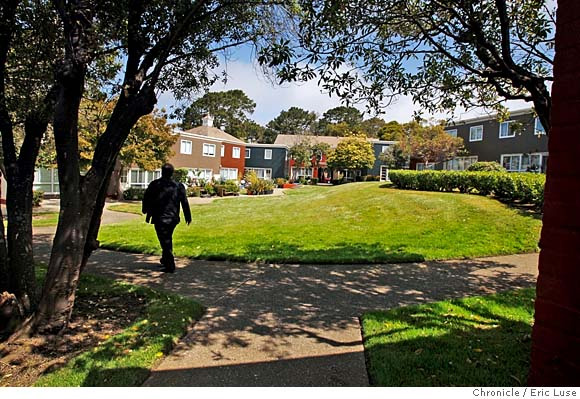Parkmerced Will Never Be the Same

Last August, the First District Court of Appeals issued its decision in favor of Parkmerced development interests in the case San Francisco Tomorrow et al. vs. the City and County of San Francisco et al. Now, that decision has been upheld.
At issue in the case is the fate of Parkmerced, the serene mid-twentieth-century neighborhood that is a San Francisco landmark. Developers, along with City and County politicians, propose to demolish Parkmerced and replace most of its existing 3,221 residences with 8,900 housing units.
When the project, which currently houses about 8,000 residents, is completed in 2040 an additional 14,000 people will be living in the 152-acre neighborhood. Units that are currently rent-controlled will stay that way, but new units will be rented or sold at market rate. The rebuilt Parkmerced will have a maximum of 3,200 rent-controlled units, the same number it has today. The Court stated it will not limit San Francisco growth because of a lack of, or because of a poorly designed, transportation system. The decision cited as a precedent, from a Los Angeles court case, is perhaps not unrelated to the traffic gridlock present there today.
In 1986, as well as today, San Francisco was in the middle of a real estate boom. Citizens here decided that there was a need to limit growth in San Francisco and so Proposition M came to pass. The language of Proposition M was adopted into Planning Code Sec.1 01 .1 , requiring that the City adhere to eight “Priority Policies” of the Master Plan when it approves projects, covering issues such as promoting existing neighborhood businesses, providing and preserving affordable housing, solving commuter congestion, providing blue collar jobs, preserving historic buildings and neighborhoods, protecting open space and lastly, promoting earthquake safety.
There were three aspects of Proposition M considered to be fundamental to a successful growth strategy. First, there should be a correct relationship between new office space and housing for the projected new work force; secondly, there should be adequate transportation for them; and lastly, there should be a cap on the amount of office space built in one year. Mayor Feinstein believed, as does Mayor Lee today, that allowing a building boom to occur would be desirable for the economy. The referendum petition gained enough signatures but the measure was put on the ballot by four Supervisors instead. Although the eight guidelines were regularly ignored, a cap of 875,000 square feet a year on office construction remained inviolate until recently.
Proposition M a Success
Proposition M curtailed a serious real-estate collapse in the early 1 990s, after the savings and loan institutions created a building boom. Houston, Boston and other cities faced a financial backlash due to surplus office space unable to be rented. San Francisco was hit by the same recession, but since its economy was more diverse, weathered the recession better.
There may have to be a strengthening of the language of Proposition M proposed as a new referendum for an improved version in the future.

